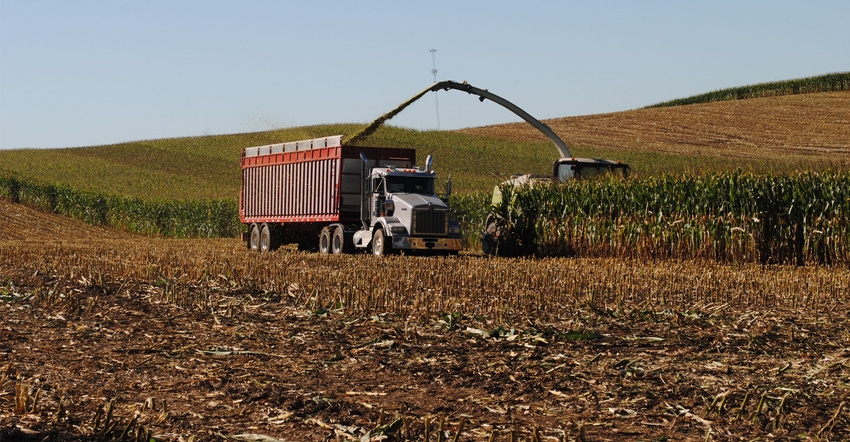July 2, 2021

Dairies harvest and ensile corn crops in August and September. This is the time of the year when farmers make key harvesting decisions with year-round implications.
Some of these decisions change the nutritive value of corn silage, especially if fiber and/or starch digestibility is impacted. Greater neutral detergent fiber digestibility increases intake, resting time and milk production by dairy cows. Energy is more available with greater starch digestibility, increasing feed efficiency.
Following are some considerations to improve fiber and starch digestibility through harvesting practices:
Breaking kernels. Kernel processing is the most important practice to increase starch digestibility of corn silage. It is well-established that the pericarp (corn hull) inhibits digestion of starch in the rumen and intestine of cows. And even though kernels get softer through silage fermentation and could be masticated and hence broken by cows, most intact kernels will leave in the manure.
In addition, benefits of silage fermentation on starch digestibility are less pronounced if kernels are not broken. Many factors affect kernel processing, and continuously monitoring kernel breakage during harvest is key to ensure that proper roll gap and chop length adjustments are made to account for field variations.
Maturity. If harvest is delayed, causing kernels to get harder and less susceptible to breaking, the efficacy of kernel processors is reduced. This can be avoided by continuously monitoring plant maturity within and across fields to determine the best time to begin harvesting. A combination of targeted whole-plant moisture (63% to 68%) and kernel milk line (two-thirds to three-quarters of milk line) is advised to account for hybrid variation.
As with other forage crops, delayed harvest also comes at the expense of NDF digestibility, which is reduced due to greater stover lignification. Other factors to consider with the harvesting of dried corn silage (more than 40% dry matter) are potential packing issues and poor aerobic stability. If delayed harvest is unavoidable, more aggressive kernel processor and chop length settings are suggested to break more kernels and keep particles from being too coarse.
Chop height. High chopping is a harvesting option that targets greater nutritive value, but at the expense of yield. With increasing chop heights, more lignin is left with the plant portion that remains in the field. Lignin is an indigestible structure component that cross-links to other fibrous fractions, reducing NDF digestibility.
Assuming a 10-inch increase in chop height, 2 percentage units greater NDF digestibility is expected.
Besides, starch concentration is expected to be 2 percentage units greater than normal-chop silage, whereas NDF can be 2.5 percentage units less. In high-chop silage, corn kernels comprise a relatively greater proportion of total mass than in normal-chop silage, because there is less fibrous plant material providing greater energy to cows and allowing for a slight reduction of dry corn in the diet. Greater NDF digestibility stimulates intake and allows for an increased amount of forage in the diet.
Potential benefits on nutritive value and greater intakes are at the expense of reduced crop yields. About half a ton of dry matter less per acre would be expected for each 10-inch increase on chop height, demanding careful monitoring of forage inventory.
Team discussions with nutritionists, agronomists and crop consultants are advised prior to the establishment of these alternatives.
Ferraretto is the state Extension ruminant nutrition specialist in Wisconsin.
You May Also Like




